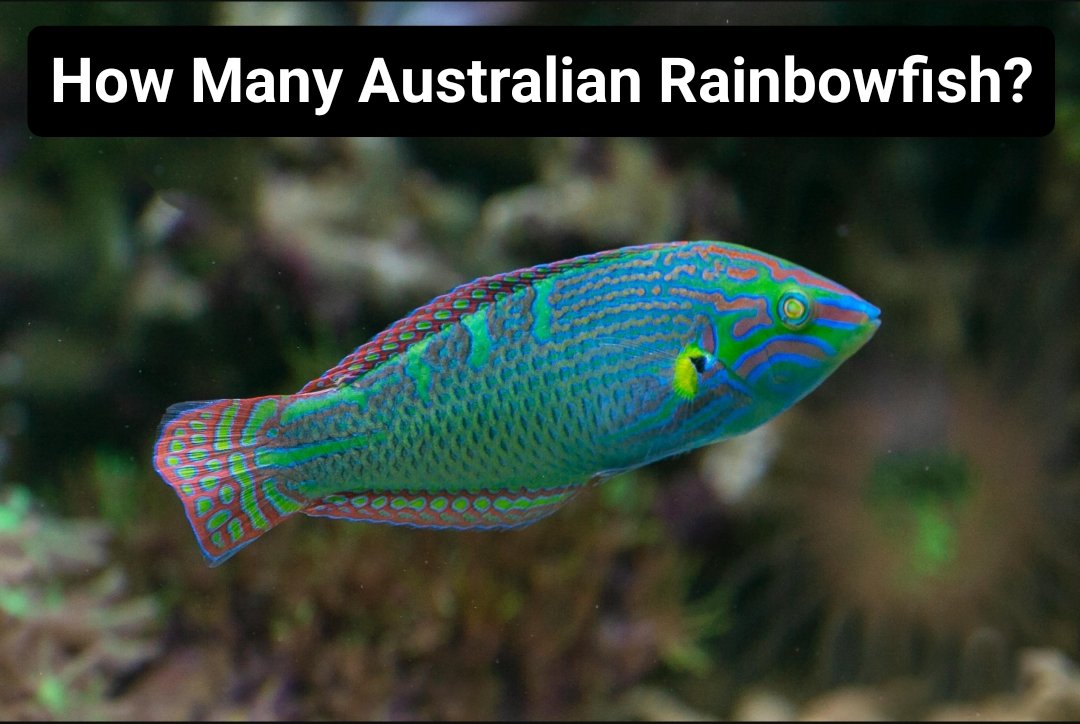News
How Many Australian Rainbowfish? Understanding the Numbers and Their Importance

Introduction
The world of freshwater fish enthusiasts is often filled with vibrant, beautiful species that not only add color to aquariums but also offer a glimpse into the diversity of aquatic ecosystems. One of the most captivating groups among these is the Australian Rainbowfish, known for its vivid hues and lively behavior. However, many wonder just how many species of Australian Rainbowfish exist and what their population status is in the wild.
In this blog post, we will dive deep into the question: how many Australian Rainbowfish are there? We’ll explore the various species that fall under the umbrella of Australian Rainbowfish, discuss their conservation status, and understand their importance in both ecosystems and the aquarium trade.
What are Australian Rainbowfish?
Australian Rainbowfish belong to the family Melanotaeniidae, native to Australia and neighboring regions such as New Guinea and Indonesia. As their name suggests, they are well known for their iridescent, rainbow-like colors that shift depending on the light and angle. These freshwater fish typically inhabit streams, rivers, and lakes.
Rainbowfish are small to medium-sized, with most species growing between 5-12 cm in length. Despite their relatively modest size, they are highly sought after in the aquarium trade due to their striking appearance and peaceful temperament.
Key Characteristics of Australian Rainbowfish:
- Bright, multi-colored scales that shimmer in various shades such as blue, green, red, and yellow.
- Small size, with most species growing up to 12 cm in length.
- Omnivorous diet, primarily consuming small insects, algae, and plant matter in the wild.
- Adaptability to both still and flowing water conditions, making them versatile in their habitats.
How Many Australian Rainbowfish Species Exist?
Australian Rainbowfish are not a single species, but rather a group of species that belong to the genus Melanotaenia. There are currently over 100 species of Rainbowfish, with approximately 35 of those native to Australia. These species are primarily found in freshwater rivers and lakes in northern Australia, as well as some coastal regions.
Here’s a breakdown of some of the most prominent species found in Australia:
1. Melanotaenia splendida (Eastern Rainbowfish)
The Melanotaenia splendida is perhaps one of the most commonly known and widespread species. It is often divided into subspecies, with variations such as the splendida splendida and splendida inornata being among the most popular in the aquarium trade.
2. Melanotaenia boesemani (Boeseman’s Rainbowfish)
This species, though originally from Indonesia, has become iconic in Australia due to its popularity among aquarists. Its striking blue and orange coloring makes it a standout in tanks.
3. Melanotaenia fluviatilis (Murray River Rainbowfish)
This species is native to the Murray-Darling Basin, one of the largest river systems in Australia. It is a more subdued species in terms of color but plays a critical role in the ecosystem of its habitat.
4. Melanotaenia duboulayi (Crimson-spotted Rainbowfish)
Known for the crimson spots on its sides, the Melanotaenia duboulayi is commonly found in Queensland and New South Wales, inhabiting a range of freshwater environments from slow-moving streams to ponds.
5. Melanotaenia trifasciata (Banded Rainbowfish)
With its distinct horizontal stripes, the Melanotaenia trifasciata is another visually striking species. It can be found in the rivers of northern Australia and has been studied for its adaptability to varying water conditions.
Section 3: Conservation Status – Are Australian Rainbowfish Endangered?
While Australian Rainbowfish species are not generally considered endangered, there are significant concerns over habitat loss, pollution, and competition from invasive species that have impacted their populations.
Key Threats to Australian Rainbowfish:
- Habitat destruction due to agricultural development, urbanization, and water diversion projects.
- Invasive species, such as the introduction of non-native fish that compete for resources or prey on rainbowfish.
- Climate change, leading to changes in water temperatures, flow patterns, and overall habitat quality.
- Pollution, especially from agricultural runoff that can lead to eutrophication, harming the water quality of their natural habitats.
Although many species are common and thrive in both the wild and aquariums, some localized populations face the threat of extinction due to these factors. Conservation efforts are necessary to preserve their natural habitats and ensure their continued survival in the wild.
Conservation Efforts:
In Australia, freshwater ecosystems are being monitored, and certain rainbowfish species have been placed under protective measures. Restoration of river habitats and the control of invasive species are some of the key strategies employed to maintain healthy populations.
One species of particular concern is the Running River Rainbowfish (Melanotaenia sp. Running River), which has faced significant declines due to habitat disruption. Conservationists have been working on breeding programs to help bolster its numbers and reintroduce it into the wild.
Section 4: Importance of Australian Rainbowfish in Aquariums
The aquarium trade plays a critical role in the distribution and popularity of Australian Rainbowfish. These fish are highly prized for their vibrant colors and adaptability, making them ideal for freshwater tanks. Additionally, their peaceful nature allows them to coexist with other species, which is a major draw for hobbyists.
Benefits of Keeping Australian Rainbowfish in Aquariums:
- Colorful appearance that brightens up tanks.
- Relatively easy care, making them suitable for both beginner and advanced aquarists.
- Peaceful behavior, allowing them to live harmoniously with other freshwater fish species.
- Contribution to conservation, as breeding programs in captivity help maintain species populations that might be under threat in the wild.
One of the most appealing aspects of Australian Rainbowfish is their adaptability. While they naturally inhabit a range of water conditions, they can easily thrive in home aquariums with proper care and maintenance. This makes them a popular choice for aquarists worldwide.
However, it is important to source Australian Rainbowfish from reputable breeders to avoid supporting illegal or unethical capture from the wild. Conservation breeding programs, like those set up for endangered species such as the Running River Rainbowfish, are crucial for maintaining biodiversity and should be supported.
Section 5: Population Estimates – How Many Australian Rainbowfish Are There?
Providing an exact figure for the total population of Australian Rainbowfish is difficult, given the wide variety of species and their varying habitats. However, estimates suggest that millions of Australian Rainbowfish exist in the wild and in captivity.
- Wild Populations: These fish are generally abundant in healthy ecosystems, particularly in northern Australia. However, certain species, especially those with localized habitats, may have much smaller populations. For example, species restricted to specific river systems, like the Running River Rainbowfish, may have populations in the hundreds or thousands, rather than millions.
- Captive Populations: The aquarium trade has ensured that many species, such as Melanotaenia splendida and Melanotaenia fluviatilis, are widely bred in captivity. These populations are substantial, as rainbowfish are among the most commonly sold freshwater fish in pet stores across Australia, North America, and Europe.
Despite their abundance, efforts must continue to monitor the health of wild populations to prevent overexploitation and habitat degradation.
Conclusion
In summary, when asking how many Australian Rainbowfish there are, the answer is complex. There are over 35 species of Australian Rainbowfish, with millions of individuals existing in both wild ecosystems and captivity. While some species are thriving, others face significant threats due to habitat loss, invasive species, and environmental changes. Conservation efforts are critical for ensuring that Australian Rainbowfish continue to flourish in their natural habitats.
For fish enthusiasts and environmentalists alike, understanding the diversity and challenges faced by these beautiful creatures is essential. Whether you’re keeping them in an aquarium or studying them in the wild, Australian Rainbowfish remain a vivid reminder of the richness and fragility of freshwater ecosystems.
By diving deeper into the question, we’ve uncovered not just how many Australian Rainbowfish exist, but why their preservation matters, both for biodiversity and for the joy they bring to aquarium hobbyists worldwide.
